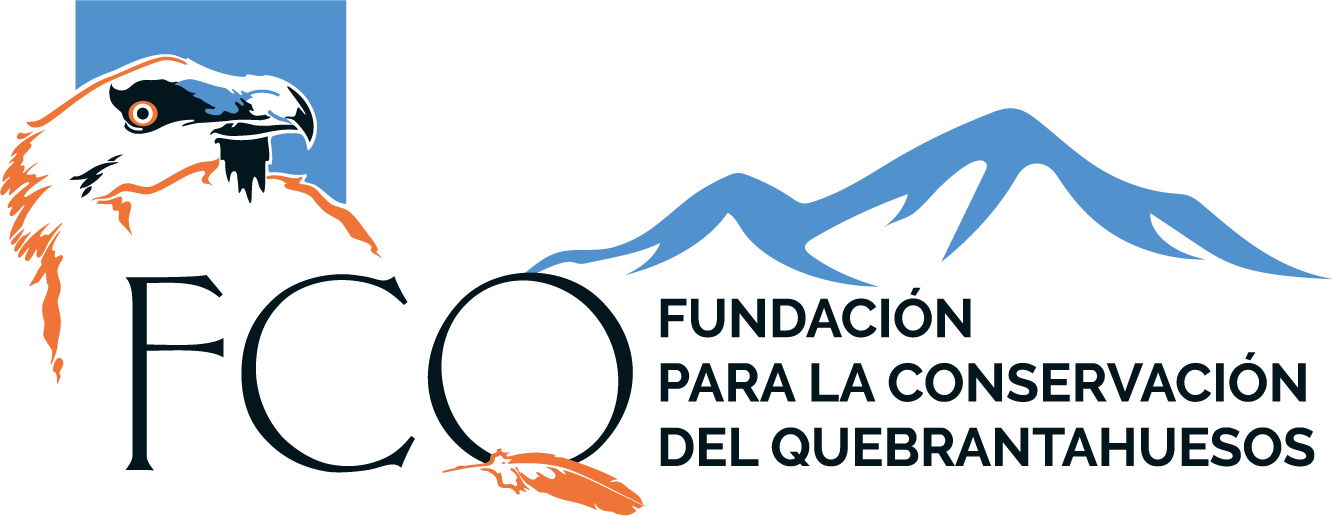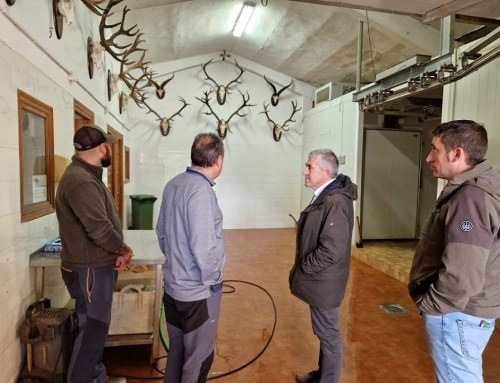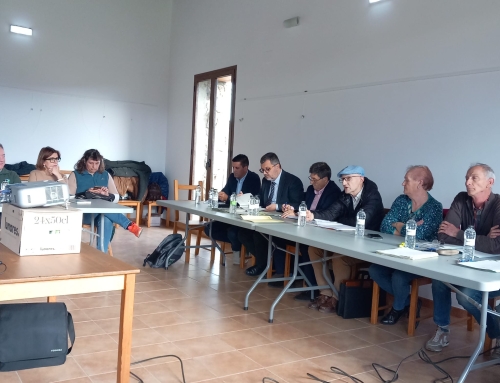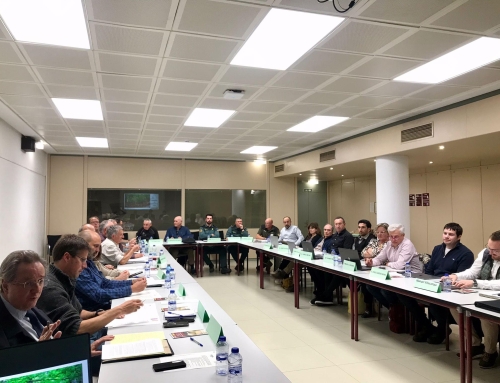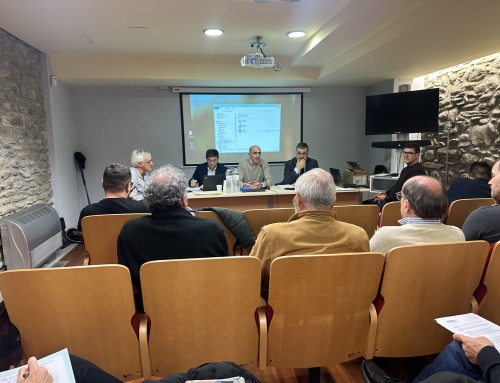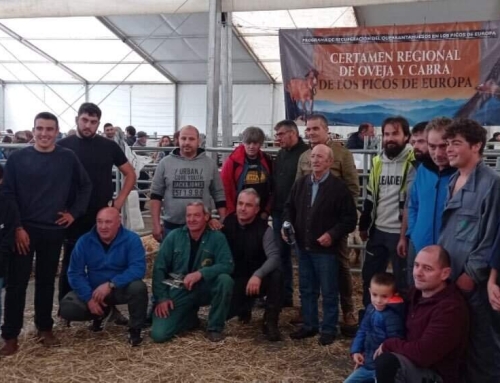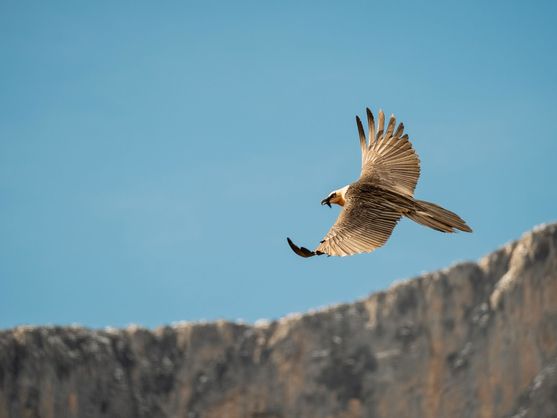
It was called Masía and was killed by a windmill.
The death of a female bearded vulture hit by a wind turbine confirms the danger to nature of installing wind farms in areas of high ecological value.
Observing the silhouette of the bearded vulture flying over the valleys of the Pyrenees, in front of the formidable rocky cliffs that lead to its summits, is one of the most impressive images of Spanish nature.
With a wingspan of almost three meters, this portentous bird of prey, which ornithologists classify with the name of Gypaetus barbatus (the bearded vulture), is one of the most emblematic species of European fauna, and also one of the most endangered. one of the most endangered in the whole of the EU.
Having disappeared from the great European mountain ranges, for years the EU has been allocating a significant amount of funds and resources to save the species.
And a large part of them are going to Spain, where the most stable population of this bird of prey lives and where, thanks to the work of scientific institutions and conservation groups, it is gradually recovering. Currently, thanks to this collaboration and the support of Brussels, the bearded vulture not only maintains and increases its presence in the Pyrenean mountain range, but has also been successfully reintroduced in some of its former territories: such as the Picos de Europa, Pyrenees, Pyrenees and Pyrenees Mountains. Picos de Europa and the Andalusian mountain ranges. As in the case of the Iberian lynxAs in the case of the Iberian lynx, collaboration between administrations, scientists and conservationists is also saving the bearded vulture.
And one of the entities that dedicates the greatest efforts to this end is the Foundation for the Conservation of the Bearded Vulture (FCQ), which has among its main tasks the identification of threats and prevention of risks that may endanger the recovery of the species.
Both the FCQ and the rest of the conservationist organizations had been warning for years about the have been warning for years that one of the that one of the greatest threats to birds is the installation of poorly conceived wind farms without the correct and essential environmental assessments. Unfortunately, this summer we have seen to what extent this threat was true after the first death of a bearded vulture in a wind farm. The event took place this June in a wind farm located in the Maestrazgo region of Maestrazgo regionThe event took place this June in a wind farm located in the region of Maestrazgo: on the border of the province of Castellón and Teruel.
It was a young female, called Masía and was part of the project Life Pro-Bearded VultureThe project, directed by the FCQ and financed by the LIFE funds of the European Union, for the recovery of the species in its former distribution area in the Iberian Peninsula.
As reported by FCQ, Masía had been released in Maestrazgo in July 2022.
Shortly after its release, it was announced that a controversial wind energy controversial wind energy megaproject in the region..
A development plan that included the installation of more than twenty wind farms in a cluster together with those of neighboring counties, many of which affected areas included in the Network of protected spaces Natura 2000 of the EU. Some political groups such as Teruel Existe and CHA did not hesitate to describe the project as “a real ecocide“. that it was going to cause “a brutal destruction in very valuable areas inhabited by endangered species”. Despite this, despite the opposition of the regionalist parties, despite the social protests that it generated in the territory and despite the fact that it was demonstrated that the deployment of the mills seriously affected areas with a high density of large birds of prey (vultures, eagles, hawks and kites), the plan was executed. As a result, last autumn FCQ and its partners in the Life Pro-Bearded Vulture project were forced to suspend the reintroduction project in the region of Teruel.
reintroduction project in the region of Teruel, which in turn meant the cancellation of all rural employment initiatives that had been launched in the area to promote the local economy in a sustainable way, fix population and contribute to the demographic challenge, without giving up its natural heritage and the high historical and cultural value of the landscape. and cultural value of the landscape..
Windmills against nature One of the wind farms erected in the area where the bearded vulture was to be reintroduced was Refoyas, with 33 wind turbines and 49,500 kW of power, developed and operated by Acciona Energía and located only 25 kilometers from the point where Masía was released, to which a satellite beacon was installed to have it located at all times and to know its movements.
On June 6, the raptor’s transmitter stopped signaling movement and stopped at a stationary point next to the wind farm. Fearing the worst, a team made up of FCQ technicians and Agents for the Protection of Nature in Aragón moved to the area and located the mutilated carcass of Masía lying on the ground, 40 meters from one of the wind turbines.
After being transferred to La Alfranca Wildlife Recovery Center, which depends on the Government of Aragón, the autopsy confirmed that the animal’s death was due to severe polytrauma caused by the turbine blades. Environmental Prosecutor’s Office.
For the FCQ the death of Masía means the disappearance of the last bearded vulture that returned to fly over the Maestrazgo, a hopeful milestone to which many efforts and resources had been devoted, and evidence of “the deadly impact that ill-conceived wind farms have on the Spanish biodiversity. Spanish biodiversity“. For Gerardo Báguena, director of the project for the reintroduction of this endangered species, “the current wind deployment in areas of great ecological value, without the relevant technological measures to reduce bird mortality, puts at risk the efforts invested by European and national institutions, research centers and NGOs in the purpose of recovering endangered species”.
Responsible renewables As a result of these facts last July the CHA deputy in Congress, Jorge Pueyo, addressed a battery of parliamentary questions to the Government of Spain to know, among other issues, “What is the Government’s assessment of the death of a bearded vulture in the province of Teruel due to the impact of a wind turbine?
What measures is the Government going to adopt to try to prevent events like this from happening again or, at least, to reduce in the future the mortality of birds in wind farms? mortality of birds in wind farms in the future?”
The Aragonese deputy was also interested in knowing if “the Government has any measures planned to verify the figures of dead animals offered by environmental consultants working at the service of energy companies” and if it was willing to “guarantee compliance with the protocol of action of the Ministry for Ecological Transition and the Demographic Challenge for conflictive wind turbines linked to the mortality of threatened or endangered birds”. The question alluded to the possible lack of rigor and clarity in the reports prepared by environmental consultants for the wind power companies that contract their services with respect to bird mortality.
Regarding this issue, an article published this August in the magazine Quercus magazine (number 461, page 43) cited official data denouncing that, in Aragon and Navarra alone and in just one year (2021-2022), 1,080 griffon vultures, 5 Egyptian vultures, 24 golden eagles, 69 red kites, 198 black kites, 48 booted eagles and 196 lesser kestrels, among many other protected species, some of them threatened with extinction, died due to collisions with wind turbines.
The threat is perfectly serious and requires a rethinking of how, where and at what speed clean energies should be deployed in Spain, beyond the strong economic interests that have been created around them and that seem to prevail in some representatives of the sector, especially after the strong entry of investment funds that, in spite of the community regulations in this respect, shirk their responsibilityenvironmental responsibility.
It is not a question of hindering wind energy, but of preventing its deployment from being incompatible with nature conservation.
And no, it is not a question of taking advantage of this type of situation to point out false conflicts between environmentalists.
Environmental organizations, which were the first to promote and support them, continue to support the energy transition and defend the responsible development of renewable energies. responsible development of renewables..
That is why they ask that the fight against climate change and biodiversity be tackled jointly, understanding them as a common challenge and avoiding that the achievement of one objective conflicts with the other. They demand, among other things, that environmental impact environmental impact assessments that must accompany wind farm and photovoltaic installation projects and the technical tests for their use, both on land and at sea, should be carried out under independent scientific criteria and in compliance with the legal and moral requirement to preserve protected areas and the biodiversity they contain.
Only in this way will we be able to comply with the European mandate to restore natureas the FCQ proposed to carry out with the sadly failed reintroduction of the bearded vulture in Maestrazgo.
Source: https://blogs.elconfidencial.com/medioambiente/ecogallego/2024-09-01/quebrantahuesos-eolica-aerogeneradores_3951718/
